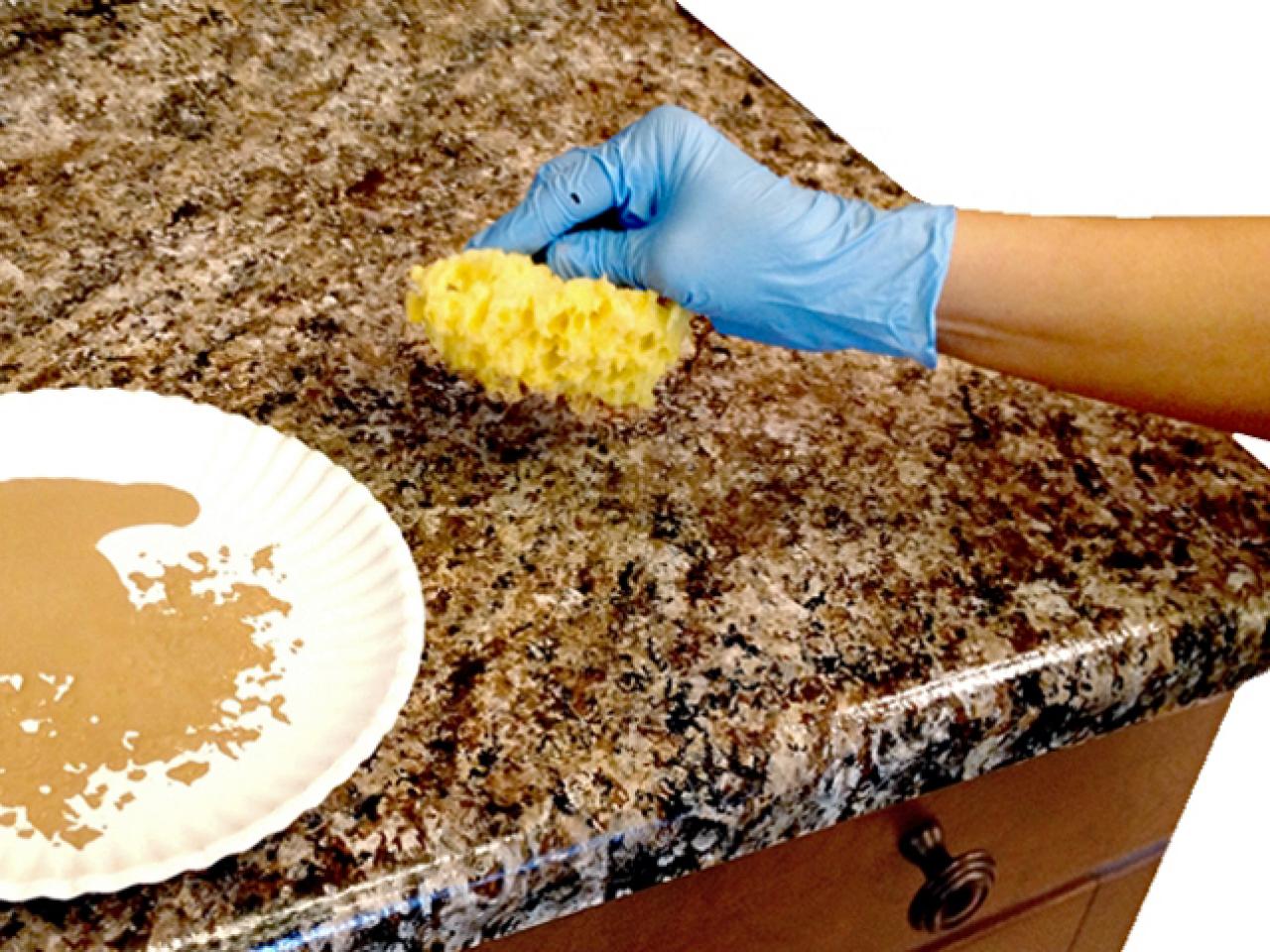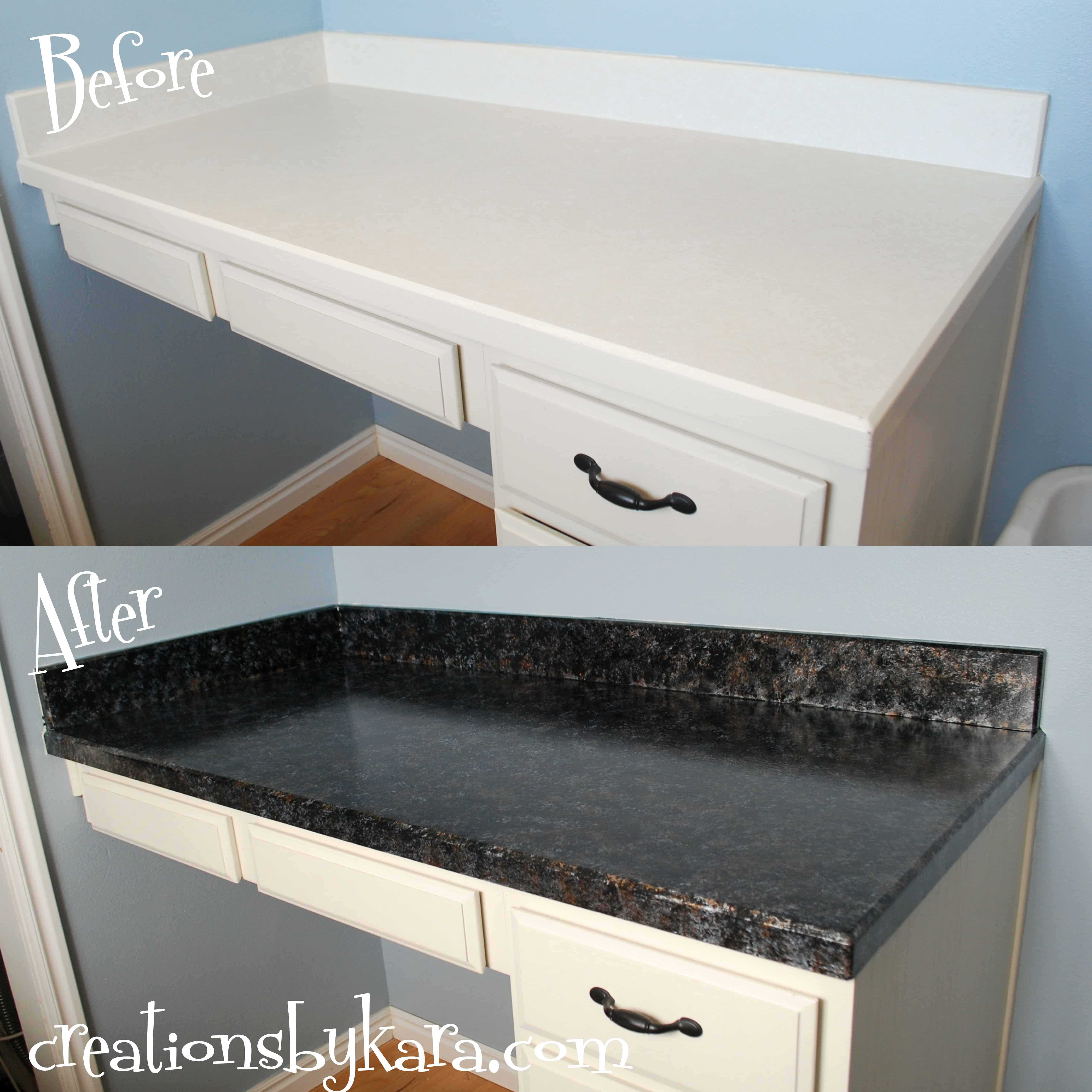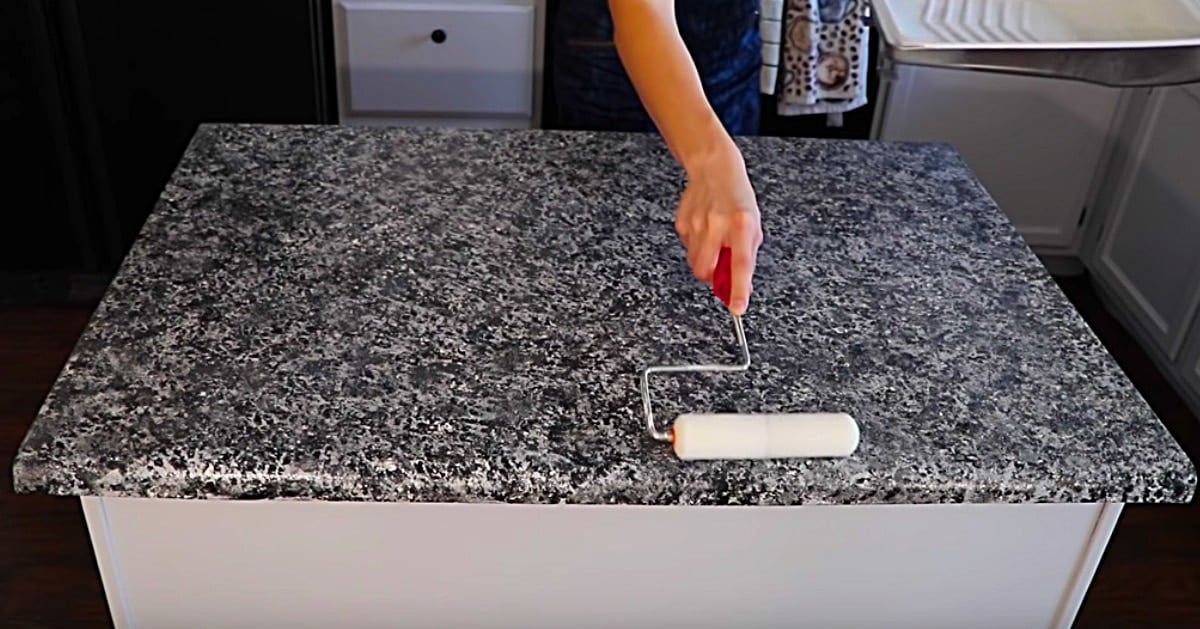The Art of Faux Painting Kitchen Countertops
Faux painting, also known as faux finishing or decorative painting, offers a creative and budget-friendly way to transform the look of your kitchen countertops. By mimicking the appearance of natural materials such as stone, marble, or granite, faux painting can add elegance and sophistication to your kitchen décor without the expense and hassle of traditional countertop replacement. Let’s discuss the process of faux painting kitchen countertops and how you can achieve stunning results with this versatile technique.

Understanding Faux Painting Techniques
Faux painting encompasses a wide range of techniques and finishes, each offering unique textures and visual effects. Some popular faux painting techniques for kitchen countertops include sponging, ragging, stippling, and marbleizing. Sponging involves applying layers of paint with a natural sponge to create a mottled or textured appearance while ragging uses cloth or plastic bags to dab and blend paint for a soft, organic effect. Stippling involves stippling brushes or rollers to create a speckled or stippled texture, while marbleizing replicates the veined patterns of natural marble using specialized tools and techniques.
When choosing a faux painting technique for your kitchen countertops, consider the overall aesthetic you wish to achieve and the existing décor of your kitchen. Sponging and ragging techniques are ideal for creating a rustic or distressed look while stippling and marbleizing techniques lend themselves to more polished and sophisticated finishes. Experiment with different techniques and color combinations to find the perfect faux painting style that complements your kitchen design.

Preparation and Priming: Setting the Stage for Success
Proper preparation is essential for achieving professional-looking results with faux painting kitchen countertops. Begin by thoroughly cleaning the countertop surface with a mild detergent and warm water to remove dirt, grease, and other residues. Allow the surface to dry completely before proceeding to the next step. Next, lightly sand the countertop surface with fine-grit sandpaper to create a smooth, even texture and promote adhesion of the paint.
After sanding, apply a bonding primer specifically designed for use on laminate or non-porous surfaces to ensure proper adhesion and durability of the faux finish. Use a high-quality brush or roller to apply the primer in thin, even coats, following the manufacturer’s instructions for drying and curing times. Once the primer has dried, you’re ready to begin faux painting your kitchen countertops.
Faux Painting Techniques: Bringing Your Vision to Life
With the surface primed and prepared, it’s time to unleash your creativity and start faux painting your kitchen countertops. Begin by selecting a base color for the countertop surface, choosing a hue that complements your kitchen décor and desired faux finish. Apply the base coat evenly with a brush or roller, ensuring full coverage and smooth application.
Once the base coat is dry, it’s time to apply the faux finish using your chosen technique. Whether you’re sponging, ragging, stippling, or marbleizing, work in small sections and blend the paint seamlessly to create a natural and cohesive appearance. Experiment with different tools and techniques to achieve the desired texture and visual effect, adjusting the intensity and density of the paint as needed.
As you work, step back periodically to assess the overall look and make any necessary adjustments to achieve the desired result. Don’t be afraid to get creative and try new techniques or color combinations to add depth and dimension to your faux painted countertops. Once you’re satisfied with the faux finish, allow the paint to dry completely before applying a protective sealant to preserve the beauty and longevity of the countertop surface.

Preserving the Beauty of Faux Painted Countertops
After the faux paint has dried, apply a clear, water-based polyurethane sealant to the countertop surface to protect the finish from moisture, stains, and abrasion. Use a high-quality brush or roller to apply the sealant evenly in thin, even coats, following the manufacturer’s instructions for drying and curing times. Allow the sealant to dry completely before using the countertop, and avoid placing heavy or hot objects directly on the surface to prevent damage.
To maintain the beauty and durability of your faux-painted countertops, clean them regularly with a mild detergent and warm water, using a soft cloth or sponge to remove dirt, grease, and food residues. Avoid using abrasive cleaners or scouring pads, as they can scratch the surface and dull the finish. Additionally, periodically reapply a fresh coat of sealant to protect the faux finish and keep your countertops looking their best for years to come.

Common Mistakes to Avoid:
Skipping Surface Preparation: Proper cleaning, sanding, and priming are essential for ensuring the adhesion and durability of the faux paint finish.
Using Incorrect Paint or Tools: Choose paint and tools specifically designed for faux painting and follow proper techniques to achieve professional-looking results.
Overlooking Sealant Application: Apply a clear sealant to protect the faux finish from moisture and damage, and reapply periodically to maintain durability and appearance.
Rushing the Process: Take your time and work in small sections, allowing each layer of paint and sealant to dry completely before proceeding to the next step, to achieve the best results.

Are faux painted kitchen countertops durable and long-lasting?
Yes, with proper preparation, painting, and sealing, faux painted kitchen countertops can be durable and long-lasting, providing years of beauty and functionality.
Can I faux paint over existing laminate or tile countertops?
Yes, faux paint can be applied over existing laminate or tile countertops with proper surface preparation and priming to ensure adhesion and durability of the finish.
What type of paint should I use for faux painting kitchen countertops?
Choose a high-quality, acrylic-based paint specifically formulated for use on countertops and follow the manufacturer’s instructions for proper application and drying times.
Can I faux paint my countertops myself, or should I hire a professional?
While faux painting countertops can be a DIY project for those with painting experience and skills, hiring a professional painter may be advisable for those unfamiliar with faux painting techniques or for complex designs.
How do I clean and maintain faux painted kitchen countertops?
Clean the countertops regularly with a mild detergent and warm water, and avoid using abrasive cleaners or scouring pads that can damage the faux finish. Periodically reapply a clear sealant to protect the finish and maintain durability and appearance.

How to Do TikTok DIY Marble Countertop Hack
DIY faux granite countertops

Faux Painting Kitchen Countertops

Faux Sho! Painted granite countertops scharlerama

Pin on For the Home

Related articles: